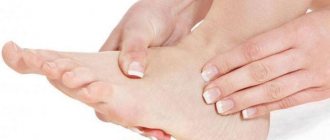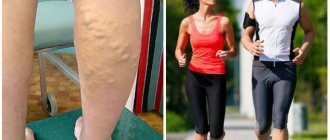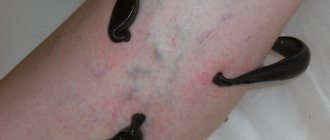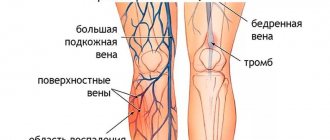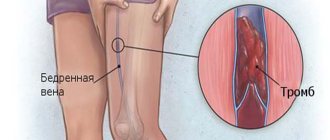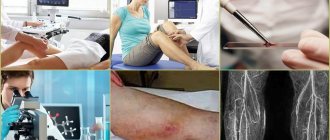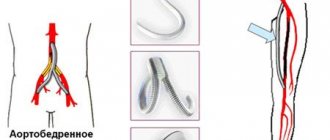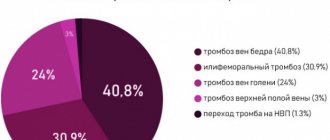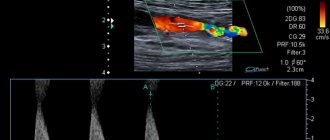Tablets for blood thinning and blood clots perform two main functions: they dissolve existing clots, restoring normal blood flow, and reduce platelet activity, thus preventing the formation of new thrombus formation.
The first group of drugs are thrombolytics. The second category includes medications against blood clots, which are part of anticoagulants and antiplatelet agents.
Thrombosis is the formation of clots inside blood vessels that prevent the free flow of blood throughout the body.
Dangerous consequences of thrombosis can be:
- Severe tissue nutritional disorders, trophic ulcers, gangrene (necrosis of the tissues of a living organism of black or very dark color, developing in the tissues of organs, directly or through anatomical channels connected with the external environment).
- Thromboembolism of the blood capillaries of the heart and lung, the consequences of which are an increased risk of death.
Considering the likely complications of the disease, most patients are concerned about the question of what tablets exist for blood clots in the vessels of the legs, how to use them, a list of prohibitions on use, and what their price is.
Classification of drugs
Treatment of thrombosis is a combination of the following tasks:
- Blood thinning, as well as restoration of continuous microcirculation.
- Resorption of blood clots that have already appeared in the veins.
- Preventive measures to prevent recurrent thrombosis.
- Renewal of lost elasticity and tone of capillaries.
Considering the above, tablets for blood clots on the legs can be divided into several groups:
- Anticoagulants are drugs that reduce blood viscosity.
- Antiplatelet agents are medicines for clots that stabilize the rheological properties of blood.
- Thrombolytics are medications that dissolve blood clots.
Injections for thrombophlebitis: an effective technique
Over the years, we increasingly notice that our body is exposed to aggressive factors, as a result of which more and more chronic diseases accumulate. One of the long-standing problems of the elderly is the problem of inflammation of the walls of blood vessels - phlebitis. The causes of phlebitis can be different, but there are two groups: infectious, caused by various pathogens, and aseptic, resulting from the introduction of aggressive substances into a vein. Phlebitis is most often observed in the vessels of the extremities. If this pathological process cannot be treated for a long time, complications may result: venous sclerosis or thrombophlebitis. The latter is caused when an inflamed vein is blocked by a blood clot.
The reasons for this diagnosis are:
- slow blood flow;
- changing its composition;
- clotting disorder;
- vascular disease or injury;
- infectious or allergic reactions;
- intravenous administration of aggressive drugs;
- surgical intervention.
Symptoms depend on the size of the blood clot and the extent of the inflammatory process, but, in general, they are divided into several groups. Namely, if thrombophlebitis is localized:
- In the lower leg: the first attack is characterized by suddenness, a feeling of swelling in the muscle tissue of the calves and painful sensations, especially in the area of swelling, which is accompanied by a change in the skin to a bluish color.
- In the area of the femoral vein: pain is expressed to a much lesser extent, due to a larger lumen and better blood flow than the same in the ankle part of the legs and is characterized by less pronounced localization. The father is not expressed, but you can track the bulging of veins in the groin, thigh, and pubic area. Possible fever and chills.
- Iliofemoral region of the main vessel: pain is felt when the canal is completely blocked. Discomfort is felt in the lumbar region (to the sacrum), in the lower part of the abdominal region. The temperature increase is somewhat less significant, reaching 39 degrees. Swelling and, occasionally, cyanosis are observed at the site of occurrence.
Diagnosis of the disease may be limited to a visit to a phlebologist, blood test and ultrasound examination, but in some cases computed tomography or CT angiography is necessary. It is also strongly recommended to undergo a chest x-ray to exclude pulmonary embolism.
Read also: Products that thicken blood and prevent the formation of blood clots
Treatment of thrombophlebitis depends on the location and degree of development, but, in any case, drug therapy is necessary. Traditional is the use of various ointments (usually heparin-based) and compresses, and in the case of an infectious form, the use of antibiotics, but such actions are only suitable for mild forms of the disease. Otherwise, as a rule, surgical intervention is performed, which can only aggravate the situation as a result of new injuries to the walls of blood vessels. My patients used a proven remedy that allows them to get rid of varicose veins in 2 weeks without much effort.
Anticoagulants
Anti-blood clot medications designed to dissolve blood clots and also prevent blood clotting. As a rule, they are prescribed for use for a long period.
The most effective anti-blood pills currently are:
- "Warfarin".
- "Heparin."
- "Aspirin".
"Warfarin"
A drug for thrombosis that suppresses the effects of blood particles and also increases blood clotting. Intended uses are:
- Thrombosis (formation of clots inside capillaries that interfere with the movement of blood through the vessels)
- Heart attacks (necrosis of a section of the heart muscle caused by circulatory disorders).
- Atrial fibrillation (a pathological condition leading to disturbances in the frequency and contraction of the heart).
- Heart operations.
List of contraindications for use:
- Liver and kidney diseases.
- Varicose veins of the stomach and intestines.
- Hemorrhagic strokes (consequences of damage to the right and left side of the brain).
- Lesions of the lining of the digestive organs.
- Thrombocytopenia.
- The first three months and last thirty days of pregnancy.
The cost of the drug varies from 60 to 200 rubles. What anti-blood pills can I still take?
Injections for the treatment of varicose veins on the legs
In medical practice, patients with varicose veins are most often prescribed drug therapy, but this is not the only method of treating varicose veins on the legs in women. You can get rid of mesh on blood vessels using sclerotherapy.
This method of treating varicose veins is an injection of saline solution directly into a vein. The injected liquid irritates the vessel and provokes its destruction. At the same time, the blood begins to clot. Over time, the vein will become simple scar tissue and quickly heal.
Causes of dizziness in women with normal blood pressure
This procedure can be performed by a dermatologist or surgeon. The number of injections given in one session is determined by the doctor. In this case, the specialist takes into account the patient’s condition, location and size of the veins.
A saline solution or fine foam is injected with a thin needle. Such drugs for varicose veins on the legs of women as “Ethoxysklerol” and “Fibro-Vein” can also be used as a solution. Convulsions may occur during injection. The pain is felt for no more than two minutes. The duration of sclerotherapy is 30 minutes.
Some patients refuse this treatment method due to the high cost and the achievement of only a cosmetic result.
After this procedure, patients are not allowed to:
- - take hot baths;
- - apply compresses;
- — visit saunas and baths;
- - stay in the sun for a long time.
"Aspirin"
The most commonly used anti-blood clotting medicine that can reduce excessive blood clotting and also prevent platelets from sticking together.
Tablets for blood clots should be used by patients suffering from the following diseases:
- Atherosclerosis (artery disease that occurs as a result of a malfunction of lipid and protein metabolism and is accompanied by the accumulation of cholesterol).
- Angina pectoris (a clinical syndrome characterized by a sensation or feeling of discomfort in the chest).
- Infarction (one of the clinical forms of cardiac ischemia, occurring with the development of ischemic necrosis of the myocardium due to absolute or relative insufficiency of its blood supply).
- Stroke (an acute disturbance of blood microcirculation in the brain, which provokes damage and death of nerve cells).
- Venous thrombosis of various etiologies (formation of a blood clot in the lumen of a vessel, which leads to impaired circulation in this area).
For preventive purposes, the drug is taken in the following dosage - one fourth tablet per day.
The list of prohibited use includes:
- Children and adolescents up to twelve years of age.
- Predisposition to allergies to acetylsalicylic acid.
- Hemophilia (rare hereditary disease).
- Bronchial asthma (chronic inflammatory disease of the respiratory tract involving a variety of cellular elements).
- Diseases of the mucous membrane of the stomach and intestines.
- The first and last three months of pregnancy.
- Severe liver and kidney diseases.
The price of the drug varies depending on the packaging from 50 to 500 rubles.
Other means
To treat and alleviate the condition of thrombophlebitis, various external agents are used, which can be divided into groups:
| Venotonics | Diosmin, Venarus. |
| Nonsteroidal drugs | Diclovit, Ortofen. |
| Heparin-based ointments | Hepatrombin, Heparin ointment. |
| Folk remedies | Baths with horse chestnut bark, garlic compresses. |
The most effective are ointments containing sodium heparin. The substance is a natural anticoagulant and is widely used in the treatment of vein-related diseases.
Most drugs containing heparin are known to patients and are in high demand due to their proven effectiveness.
Essaven-gel
An effective therapeutic agent with anti-inflammatory properties. The ointment has a cooling effect, which numbs the affected area. The active components of the gel have a complex effect.
| Heparin | Eliminates thrombosis and prevents their formation. |
| Escin | Tones veins, strengthens capillaries, prevents swelling. |
| Essential phospholipids | Stimulate microcirculation. |
Essaven-gel is used for thrombophlebitis, sports injuries, and night muscle cramps. It extremely rarely provokes allergies and has no strict contraindications.
Directions for use: Apply the product carefully to the affected area 3 times a day. Rubbing movements can injure inflamed veins.
Ketonal cream 5%
Non-steroidal drug based on ketoprofen:
has anti-edematous and anti-inflammatory effects; helps eliminate pain; prevents the release of enzymes that are involved in the inflammatory process.
Application: 3 times a day, apply the ointment to the affected area, rub in easily with stroking movements. The course of treatment should not be more than two weeks. The cream has a number of contraindications and may cause side effects.
Lyoton-gel
An effective drug with antithrombotic and sedative effects. The active substance is sodium heparin. The gel can be used by pregnant and lactating women and has no strict restrictions on its use.
Applicable in the following cases:
subcutaneous hematomas; swelling, localized infiltrates; thrombophlebitis; complications in the veins after surgery.
Application: 1-3 times a day, the ointment is gently rubbed into the affected area of the skin. The duration of treatment is determined by the severity of the disease. For the effective effect of the drug, it is recommended to alternate its use with Ketonal cream. The products are rubbed into the skin twice a day.
Thrombophlebitis of the legs is a consequence of advanced varicose veins. Thanks to modern medicine, this phenomenon can be treated, but prevention of the disease is the best way to combat the development of inflammation of the veins.
"Heparin"
A medication that stimulates the speed of blood flow through the vessels. Heparin is necessary for prophylactic purposes to prevent blood clots. The drug is available in the form of a solution for injections, and is also included in the structure of many anti-blood clot medications for external use.
The solution can be administered either by drip or injection. Assignments for therapy:
- Thrombosis of deep vessels of various etiologies.
- Acute thrombophlebitis (thrombosis with inflammation of the vein wall and the formation of a blood clot that closes its lumen).
- Mastitis (inflammation of breast tissue).
- Extensive hematomas (accumulation of blood due to closed or open injuries to organs with rupture of blood vessels).
It is used for hemodialysis, as well as for washing intravenous catheters. The following conditions are considered prohibitions on administration:
- Tendency to bleed.
- Hemorrhagic strokes (consequences of damage to the right and left side of the brain).
- Period of menstruation.
- "Interesting position" of a woman.
- Breastfeeding period.
- Childbirth (the natural process that ends pregnancy and involves the expulsion of the fetus and placenta from the uterus).
- Damage to the gastric mucosa.
The cost of the medicine is 400 rubles.
Phlebodia
For varicose veins, phlebodia can be used. The tablets contain diosmin, which is the active ingredient of the drug. The manufacturer describes the following effects of the product:
- decreased permeability of the vascular wall,
- improvement of venous outflow,
- increased lymphatic drainage,
- normalization of blood circulation and tissue nutrition.
Thus, phlebodia can be classified as a drug similar in composition and properties to Detralex. It is recommended to take the medicine for venous insufficiency, as well as for the complex treatment of varicose veins of the lower extremities and pelvis.
To achieve effects, phlebodia must be taken 1 tablet 1 time per day. in the morning on an empty stomach. Improvement in well-being occurs no later than after 2 months. If after this time the patient does not experience relief, treatment tactics should be reconsidered.
The only side effects that should be noted are individual intolerance to the components of the drug, nausea, headache or abdominal pain. However, this occurs extremely rarely. Due to the fact that phlebodia has not been tested on pregnant women, it is unknown how taking the drug affects the health of the mother and fetus. Therefore, during pregnancy you should refrain from taking pills.
"Trombo Ass"
Blood clot and blood thinner tablets are used to prevent the following diseases:
- Strokes.
- Heart attacks.
- Angina pectoris (pain in the heart area caused by insufficient blood supply to the heart muscle).
- For deep vein thrombosis.
- In the postoperative period to prevent thrombosis.
Prohibited for use under the following conditions:
- Age up to eighteen years.
- Hemorrhagic diathesis.
- Bleeding (outflow of blood beyond the vascular bed or heart into the environment (external bleeding), into the body cavity or the lumen of a hollow organ).
- The first and last three months of pregnancy.
- Lactation (the process of accumulation and excretion of milk in humans and mammals).
- Diseases of the mucous membrane of the stomach and intestines.
The price of medicine varies from 40 to 150 rubles.
"Clopidogrel"
Reduces the speed of the process of combining platelets, reducing their adhesion and the formation of blood clots. Used to prevent thrombus formation during ischemia, as well as heart attacks and atrial fibrillation.
Prohibitions on the use of medicine:
- Allergic reaction.
- Pregnancy and breastfeeding.
- Tendency to bleed.
- Under twelve years of age.
The cost of the drug varies from 400 to 700 rubles.
Eliquis
Inhibits platelet activity, prolonging the prothrombin period, and prevents the formation of blood clots.
The prescriptions for therapy are:
- Thrombosis.
- Thromboembolism of the pulmonary artery (blockage of the pulmonary artery or its branches by blood clots, which often form in the large veins of the lower extremities or pelvis).
- Prevention of vascular blockage in atrial fibrillation.
- Arterial hypertension (persistent increase in blood pressure from one hundred and forty to ninety millimeters of mercury and above).
- Heart diseases.
- Diabetes.
The drug is effective for preventing thrombosis after prosthetic replacement of leg joints. Contraindications for use are:
- Allergic reactions (pathological conditions arising as a result of the body's hypersensitivity to allergens penetrating from outside and characterized by the sudden development of localized or generalized allergic reactions).
- Bleeding.
- Damage to the liver and kidneys.
- Pregnancy and breastfeeding.
- Age less than eighteen years.
The price of the drug ranges from 800-2500 rubles.
Thrombolytics
These are medications that eliminate clots that are already present. They are produced in the form of injection solutions, which must be administered directly to the area where the clot is localized.
When using drugs to eliminate blood clots, there is a risk of bleeding, so they should only be used in a hospital setting under the supervision of a medical specialist.
Reviews
Drug treatment for thrombosis is considered the main and mandatory element of combination therapy. The drug for thrombosis in the capillaries is able to restore good blood flow in organs and tissues, and also prevent the re-formation of clots.
Tablets for blood clots in capillaries are needed to cleanse them and stabilize blood microcirculation. Thrombosis is considered a natural process in the human body, which is necessary to protect against blood loss when a vessel is damaged.
But it happens that blood clots form when this is not necessary. They interfere with the flow of blood flow, thereby creating a life-threatening situation for the patient. Modern medications can break up existing clots and prevent new clots from forming. You should take tablets to resolve blood clots on time to prevent negative consequences.
Venotonic ointments
Ointment for thrombophlebitis is an effective remedy. Any ointments must be used after consultation with a doctor. Contact a medical specialist at the first signs of the disease that appear on the legs - due to the fact that thrombophlebitis is localized on the lower extremities.
The greatest positive effect from the treatment of leg veins is observed with complex therapy, which includes taking other medications.
Venotonic ointments for thrombophlebitis of the lower extremities as the only drug can provide the necessary degree of effectiveness in the initial stages of the pathology. With ointments and gels, if a disease is suspected or its onset is diagnosed, it is possible to alleviate symptomatic manifestations. Sometimes venotonics are prescribed as a medicine for varicose veins.
Venotonic ointment for thrombophlebitis alleviates conditions and prevents the following processes:
- relieve pain from the lower extremities;
- reduce swelling;
- remove the feeling of heaviness in your legs;
- increase blood flow;
- strengthen vascular walls;
- reduce the likelihood of blood clots.
Ointments for thrombophlebitis on the legs have several varieties. Each type is characterized by its own spectrum of action; for this reason, venotonic medications are divided into 3 groups:
- Venotonic ointments, the key active ingredient in which is troxevasin, horse chestnut or sweet clover. They are characterized by a resolving effect and show effectiveness in the initial stages of leg vein pathology. The release form may vary - gel or capsules, but the gel has an intense effect.
- Heparin ointments are a product that is applied externally. These gels are able to resolve thrombosis and prevent the emergence of new areas of stagnant blood in the veins. The remedies are prescribed by specialists as a preventive measure. They can be used by women during pregnancy and breastfeeding. Heparin ointment for thrombosis has no effects or contraindications.
- A non-steroidal range of drugs is represented by drugs that include anti-inflammatory components - diclofenac or indomethacin. They can act as a drug and as an adjuvant during the course of treatment. They are used to reduce swelling and level out foci of inflammation, and are characterized by an analgesic effect.
Ointments for the treatment of thrombophlebitis may fall into the category of hormonal drugs. Medicines used: Sinaflan, Flucinar. They are characterized by the onset of a powerful effect. Able to cope with manifestations that have not responded to local treatments.
These medications have a list of contraindications and can provoke a number of negative reactions from the body. They cannot be used without the appointment of a specialist.
